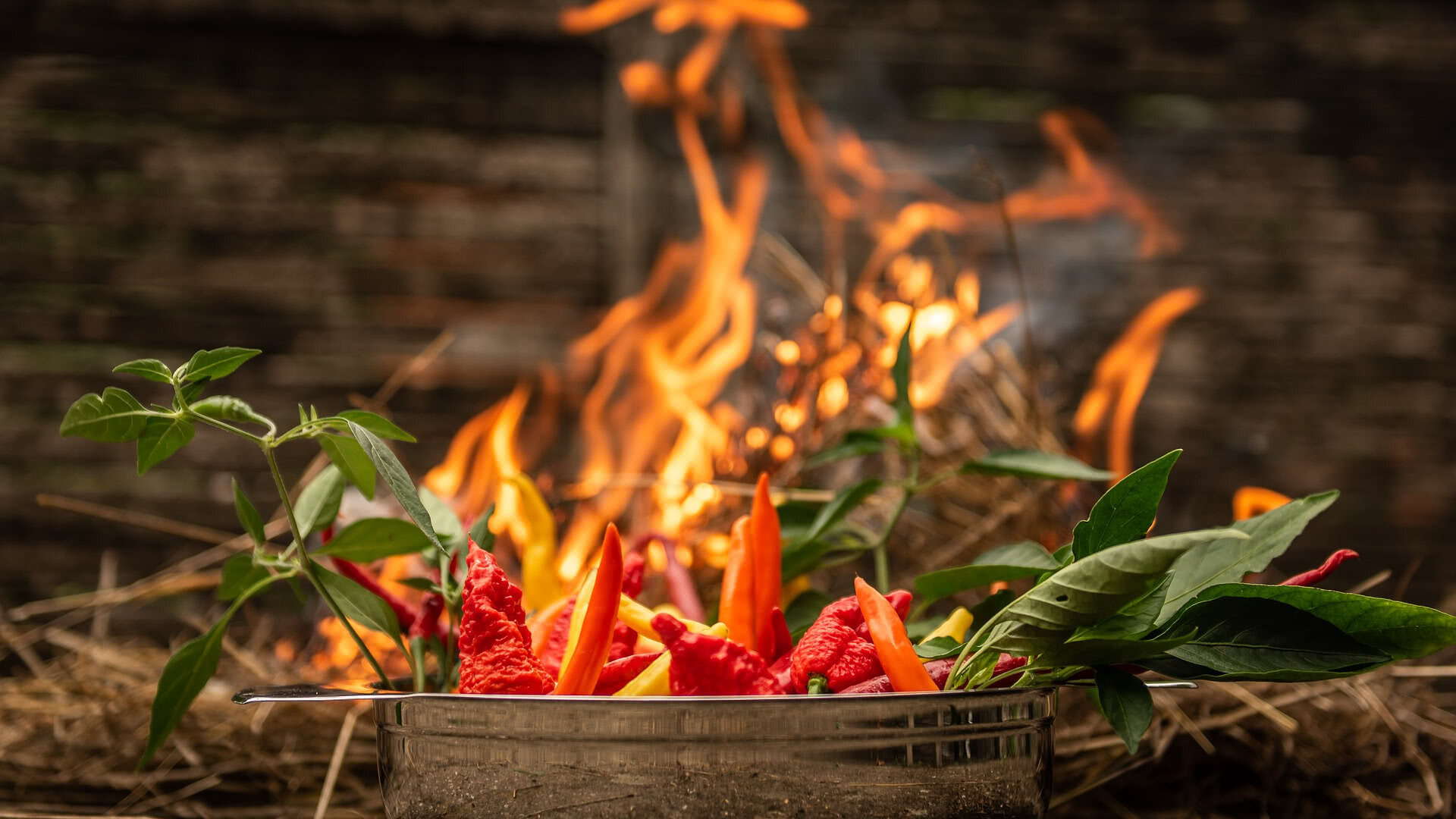Making chili plants hotter

Natural the sharpness of the chilies is influenced by the time of harvest, the nutrients and the amount of sun.
Green or red chilies
Ripe pods are sharper with the same chili. Many chilies turn red, some remain yellow or orange. If the chili ripens longer, more capsaicin can be produced. With overripe fruits, however, the content sings again. Caution: a green Trinidad Scorpion burns more devilishly than a red Cayenne.
The Scoville scale indicates the degree of sharpness in SHU (Scoville Heat Units). From 0 for no sharpness over about 6000 for Jalapeños up to over two million for Carolina Reaper Chilis.
Capsaicin has its highest concentration in the chili pepper of the seeds. The alkaloid is formed, which irritates pain receptors in humans and mammals to protect their seeds. Birds, on the other hand, do not perceive capsaicin. During evolution, chilies have decided to have their seeds spread by birds. This successful concept of propagation and distribution bears the scientific name ornithochorie.
Aren’t their chili plants hot enough?
Chili plants can be made to produce more capsaicin if they fear that their seeds will be wasted or destroyed.
There are several approaches to increasing the severity of chilies. However, no one has been sufficiently scientifically researched. But all of them have one thing in common: to put chili plants stressed.
Little water
I’m sure you’ve read this note a lot. It is also the quickest to put. Only when the leaves become wilted is watering started. Never more than absolutely necessary to keep your plant alive. The disadvantage of this variant is that the aroma and the quantity harvested suffer. This method is best used a few days before the harvest.
Lots of moisture
Capsaicin is formed by chili plants so that only birds eat the berries and seeds and spread them. Another reason for the formation of capsaicin is the defense against molds. Such a fusarium infestation occurs more frequently in wetlands.
A humid environment leads to higher seed production in chilies and thus to more capsaicin in the placenta. According to researchers, this is controlled by the opening of stomata, which balance the environment. This would also explain the particularly sharp varieties of Capsicum chinense, which originated in the Amazon basin.
Just remember that chili roots do not tolerate water logging. If the soil is wet, the Capsicum plant will soon shrink.
Worm fertilizer
American breeders swear by worm droppings. Fresh fertilizer from worms is highly concentrated. Magnificent growth and high crop yields are the benefits. According to the theory of high-power chili growers, the worm fertilizer causes the plants to suspect a worm attack would be imminent. As a result, more capsaicin is produced in the chilli peppers. This increases the Scoville value. You can be skeptical, but success proves them right.
The special fertilizer is also available in Germany from various dealers and manufacturers.
Plant sharper varieties nearby
Competition stimulates business. If there are stronger competitors near the plant, it may have the worse leaf. More effort is then required to assert oneself in propagation.
It is therefore not possible to add a few Jolokias or Carolina Reaper to your existing jalapeños. In many nurseries you will get adult Habanero chili plants. At the latest in the mail order business also the hottest varieties.
Weed
There seems to be a natural hostility between grass and chili. In specialist information to US farmers it is regularly pointed out that the fields must be cleared of grass before sowing. A regular removal of weeds, preferably manually, is recommended.
Recently, the degree of sharpness of chilies was measured on neighboring fields. Researchers found that fruits from fields with more grass also had a higher capsaicin content.
What other possibilities do you know of for pimping chili plants?
